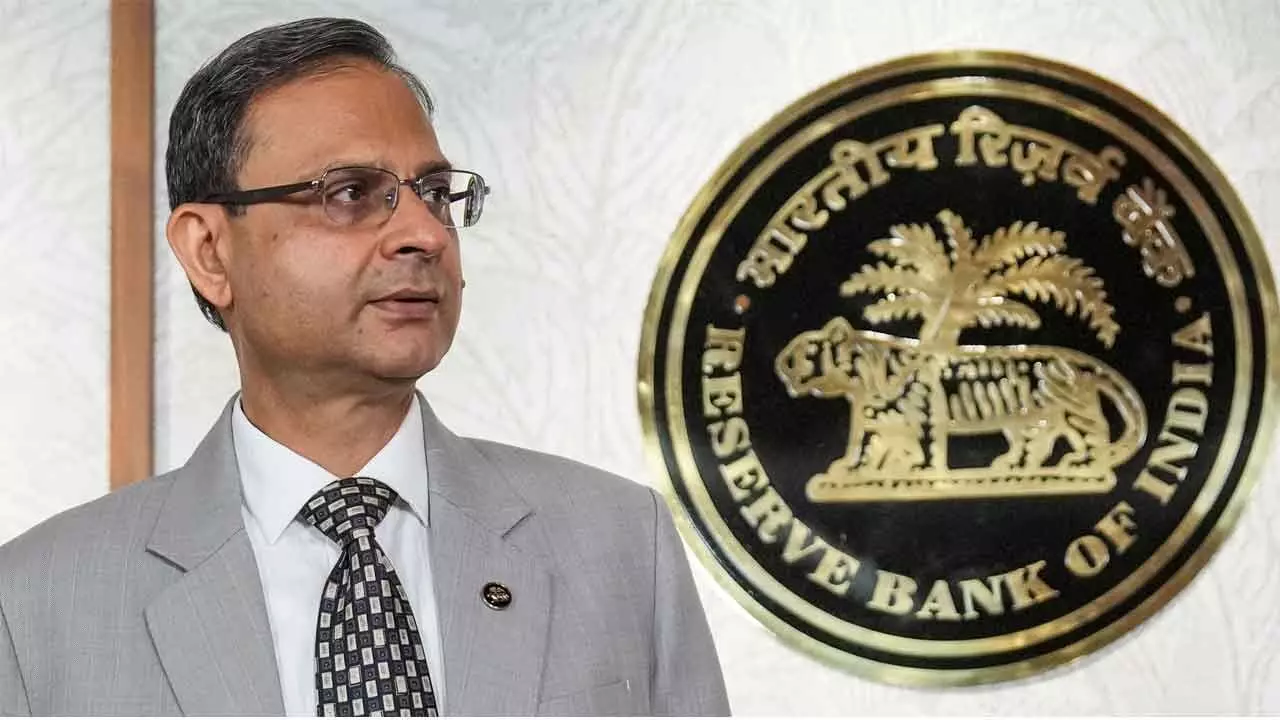RBI Unveils Double Bonanza To Spur Growth
A jumbo rate cut of 50 basis points in the repo rate from 6% to 5.5%; 100 bps cut in CRR to inject `2.5 lakh crore into banking system
RBI Unveils Double Bonanza To Spur Growth

Mumbai: In a big relief for borrowers who can expect lower EMIs for long-term loans, especially home loans, RBI Governor Sanjay Malhotra on Friday announced a jumbo rate cut of 50 basis points in the repo rate from 6 per cent to 5.5 per cent.
The RBI Governor also announced a 100 basis points CRR cut, effective in four equal tranches of 25 basis points starting from September 6, October 4, November 1 and November 29. The step is expected to inject Rs 2.5 lakh crore into the banking system, boosting liquidity and supporting credit flow. Malhotra said, a total amount of Rs 9.5 lakh crore of durable funds has been injected into the banking system since January. With the reduction in four equal tranches ending November 29, 2025, the CRR would come down to 3 per cent. This means that the commercial banks would have to maintain a lower level of 3 per cent in liquid cash form with the RBI allowing them to have higher funds for lending.
Amidst slowing down of credit offtake and global uncertainties, RBI has leveraged the softening of inflation which slid below the lower RBI band of 4 per cent, the Central slashed the repo to spur growth in the economy.
A lower policy rate leads to a decline in interest rate on bank loans which makes borrowing easier for consumers as well as businesses resulting in higher consumption and investments in the economy leading to higher growth. However, the effectiveness of this rate cut will largely hinge on how quickly and efficiently commercial banks pass on the benefits to borrowers.
NEUTRAL STANCE
HEREAFTER
The RBI Governor said the repo rate has now been reduced 100 basis points in quick succession since February this year and hence, the monetary policy stance has been changed from accommodative to neutral. Also, there is very little scope for rate cut in the current circumstances. “We will continue to monitor the incoming data and we will move primarily what the data suggests to us,” he said. Accordingly, the central bank, changed its monetary policy stance to “neutral” from accommodative. This will enable the RBI to keep a close watch on the overall growth-inflation dynamics.
INFLATION PROJECTION
The RBI Governor informed the inflation rate has now declined to 3.2 per cent amid a broad-based moderation of prices, and there is a durable alignment of the inflation with the RBI’s band. Accordingly, the RBI has also reduced its projection for the inflation rate from 4 per cent to 3.7 per cent. The uncertainties regarding rabi crops have abated considerably and the second advance estimates point to a record wheat production and higher production of key pulses over that last year. Robust kharif arrivals, are also expected to set the stage for a durable softening of food inflation. Furthermore, the fall in crude oil prices augurs well for the inflation outlook.
ECO INDICATORS
RAISE HOPES
The various economic indicators remain strong. There is a gradual rise in discretionary spending and healthy private consumption. Industrial activity is gaining gradually while the services sector is likely to maintain momentum. Rural demand remains steady while urban demand is improving.
GDP PROJECTION
UNCHANGED
The RBI kept the Gross Domestic Product (GDP) growth projection unchanged at 6.5% in the current financial year. The quarterly projections are: 2.9% (April-June), 3.4% (July-September), 3.9% (October-December), and 4.4% (January-March).
The central bank also reduced the cash reserve ratio (CRR) by 100 bps and said it will release Rs 2.5 lakh crore of bank funds. CRR refers to the percentage of total deposits that banks must hold in liquid form with the RBI.
NO SLR CHANGE
RBI, however, did not tinker with Statutory Liquidity Ratio (SLR) and maintained it at 18 per cent. SLR is a regulatory requirement that requires banks to hold 18 per cent of total deposits or net demand and time liabilities (NDTL) in government securities. This ensures that banks have sufficient liquidity to meet customer withdrawal demands and maintain financial stability.
CRYPTO WILL HAMPER
FINANCIAL STABILITY
RBI Governor Sanjay Malhotra on Friday said the central bank is concerned about cryptocurrencies as it can hamper financial stability. The Supreme Court has last month asked the Centre to formulate a “clear cut” policy on regulating cryptocurrency, while underlining its impact on the economy. A Supreme Court bench termed the Bitcoin trade as an illicit trade more or less like “hawala” business.

